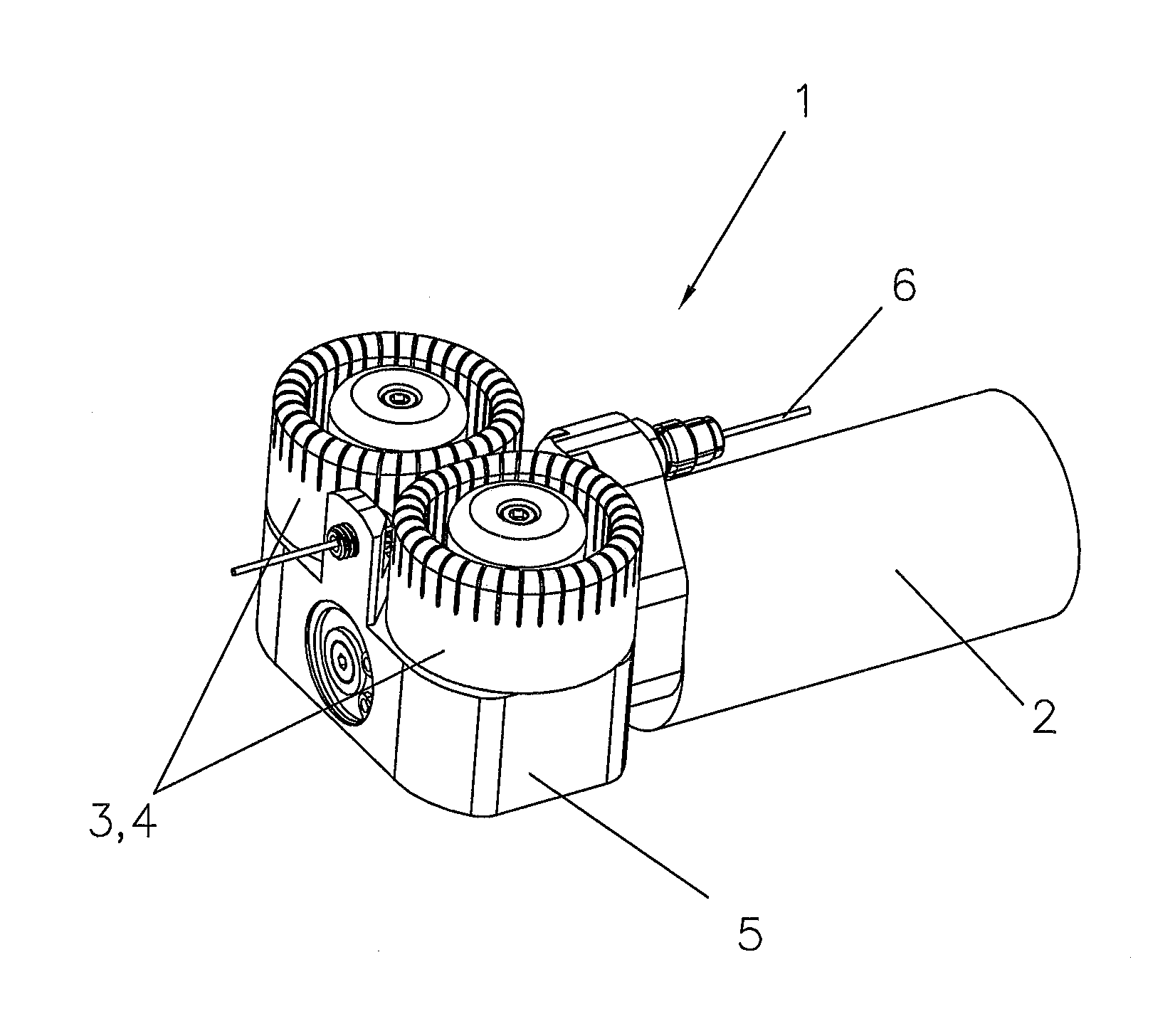Welding wire conveyor roller and feeding device for conveying welding wire
a technology of welding wire and conveyor roller, which is applied in the direction of welding equipment, arc welding equipment, manufacturing tools, etc., can solve the problems of misadjustment and inability to use the welding plant productively
- Summary
- Abstract
- Description
- Claims
- Application Information
AI Technical Summary
Benefits of technology
Problems solved by technology
Method used
Image
Examples
Embodiment Construction
[0032]FIG. 1 illustrates a feeding device 1 with a drive motor 2 and a gear 5 connected thereto and an embodiment of the welding wire conveyor rollers 3, 4 in accordance with the invention for conveying the welding wire 6. By means of the welding wire conveyor rollers 3, 4 according to the invention complete clamping of the welding wire 6 to be conveyed is achieved. An adjustment means for adapting the feeding device 1 to the welding wire 6 is not required due to the elasticity of the welding wire conveyor rollers 3, 4 in accordance with the invention.
[0033]FIG. 2 illustrates the feeding device 1 of FIG. 1 in side view for a clearer illustration of the guiding of the welding wire 6 through the guiding sleeve 7 and the welding wire conveyor rollers 3, 4. The drive motor 2 drives the gear 5 which in turn rotates at least one of the receiving pins 8, 9 on which the welding wire conveyor rollers 3, 4 are mounted. The gear 5 is designed such that at least one of the receiving pins 8, 9 i...
PUM
| Property | Measurement | Unit |
|---|---|---|
| diameter | aaaaa | aaaaa |
| diameter | aaaaa | aaaaa |
| area | aaaaa | aaaaa |
Abstract
Description
Claims
Application Information
 Login to View More
Login to View More - R&D
- Intellectual Property
- Life Sciences
- Materials
- Tech Scout
- Unparalleled Data Quality
- Higher Quality Content
- 60% Fewer Hallucinations
Browse by: Latest US Patents, China's latest patents, Technical Efficacy Thesaurus, Application Domain, Technology Topic, Popular Technical Reports.
© 2025 PatSnap. All rights reserved.Legal|Privacy policy|Modern Slavery Act Transparency Statement|Sitemap|About US| Contact US: help@patsnap.com



